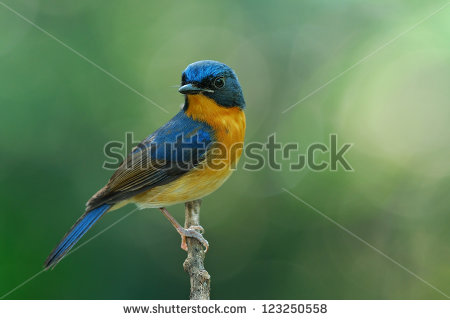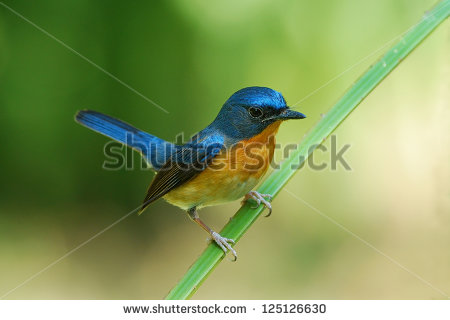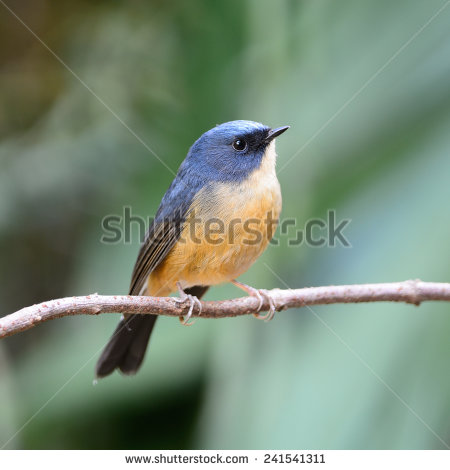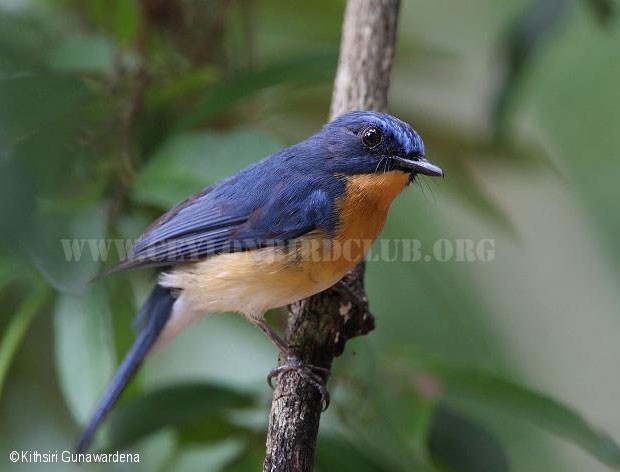
Cyornis tickelliae
SUBFAMILY
Muscicapinae
TAXONOMY
Cyornis tickelliae Blyth, 1843.
OTHER COMMON NAMES
English: Tickell’s blue flycatcher; French: Gobemouche de
Tickell; German: Braunbrust-Blauschnдpper; Spanish: Niltava
de Tickell.
PHYSICAL CHARACTERISTICS
The body length is about 5.5 in (14 cm). The sexes are dimorphic.
The male has a blue back and top of the head, a black
mask around the eyes, a rufus chest, and a white belly. The female
is colored a more subdued blue above, with a white
throat and belly and rufus-washed chest. The juvenile is brown
with whitish spots and bluish wings and tail. However, some of
these colors and patterns differ among geographic races.
DISTRIBUTION
A widespread species of the Indian subcontinent, occurring in
India, southern Nepal, and Sri Lanka.
HABITAT
Occurs in open, dry forest and woodland, and also in wellvegetated
gardens.
BEHAVIOR
A nonmigratory species. Pairs of breeding birds defend a territory.
Flits actively in the canopy. The song is a metallic trill of
six to 10 notes.
FEEDING ECOLOGY AND DIET
Catches flying insects within the forest canopy, by an aerial
sally from a perch.
REPRODUCTIVE BIOLOGY
Builds a cup-shaped nest of mosses on a rocky ledge, in a treehole,
or among tangles of tree-roots. Nests within about 6 ft
(2 m) of the forest floor.
CONSERVATION STATUS
Not threatened. A widespread and locally abundant species.
SIGNIFICANCE TO HUMANS
None known, except for the economic benefits of birdwatching.
Other popular Animals
Photo Gallery of - Orange-breasted blue flycatcher




 Animalia Life
Animalia Life